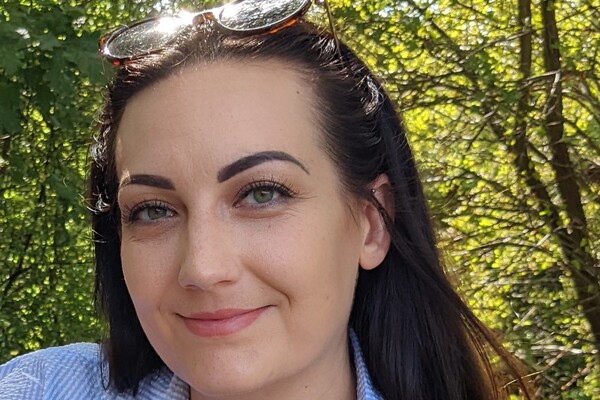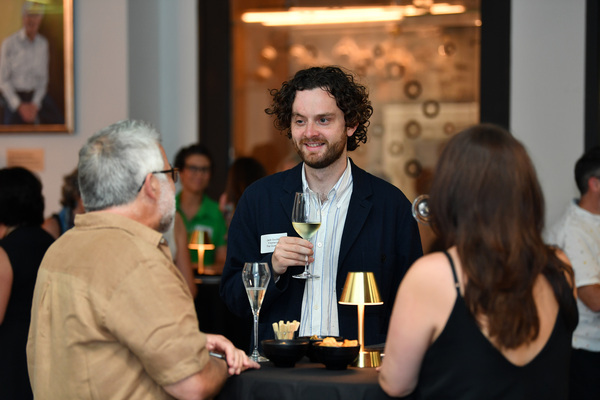Laura Lansdowne is busy – very busy. As the Managing Editor at scientific news publication Technology Networks, she collaborates with the Editorial Director to develop and maintain the publication’s editorial strategy, leads an in-house editorial team of nine people, six of whom she manages directly, and oversees freelance commissions.
“There is no standard day,” she says – one day could involve optimising newsletters with the marketing team, while the next she might be planning the following year’s product offerings and content priorities, and consulting with the publication’s scientific advisory board to identify hot topics and areas of focus. “It’s a really broad spectrum,” she adds.
But that’s not all she’s juggling. Lansdowne became a mum to a little boy in 2022, returning to work last year after maternity leave, and her second baby is on the way. For this reason, and as “a bit of a workaholic,” she needs to be good at time management and multitasking. “You put your professional hat on, then turn the laptop off, mum hat goes back on, continue, and then you maybe get an hour to relax at the end of the day, if you're lucky, before you're packing lunches and nursery bags and back in work mode again.” While it’s all “quite tiring,” Lansdowne says she loves “both jobs immensely” and wouldn’t change it: “I hate sitting down…I always like to keep busy.”
With that in mind, it’s hard to believe Lansdowne “almost ended up in fashion and textiles – which is insane,” she says. Lansdowne has loved both art and science since she was very young and found herself torn between the two when deciding what to study at university. After deferring an undergraduate degree in microbiology, she undertook an art diploma for a year. However, her final project ended up focusing on genetic diseases: “I'd created this massive wire chromosome sculpture and it struck me, the science was emerging naturally,” she says.
She replaced microbiology with a broader degree in biological sciences. But, while she “never liked lab work,” her first job out of university was just that. She then joined the Wellcome Sanger Institute as a research assistant where she studied genetic disorders in children. “Although I was immersing myself in the science, I still had that itch for the science communication element that wasn't quite being scratched, which then led me to shift to medical communications,” Lansdowne says. She went on to become a medical information scientist at a pharmaceutical company before transitioning to publishing by joining an open-access journal, which eventually led her to Technology Networks. “So, it's been a ride, shall we say… but I learned a lot.”
Lansdowne, who did not know about Technology Networks before she joined almost seven years ago, says she probably ended up in a lab because she didn’t know what else was out there and where to look for science communication opportunities. She advises others to look at broad news publications as well as journals and to consider freelance writing. “It’s an extremely competitive place to be, but there is scope to do extremely well,” she says. A lot of publications look to commission writers in specific areas, she adds, so if you can build up a specialism or niche, and push yourself, “you can really build some good relationships with publications.” She also recommends exploring various types of content, with her publication creating videos, ebooks and infographics, not just articles.
“Obviously, I love art. So, my creative flair is satisfied by the variety of projects, and the graphic design side of things as well.” – Laura Lansdowne, Managing Editor at Technology Networks
Lansdowne – who initially joined Technology Networks as a writer and editor before becoming senior in that position and later taking on her current role – also emphasises the importance of taking advantage of opportunities within your organisation, including participating in buddy programmes, putting yourself and your ideas out there, being receptive to feedback, and being transparent about your ambitions with your line manager and colleagues. Beyond your company, she suggests looking at organisations such as the Association of British Science Writers and exploring ways to network more broadly.
Even big names within science are “really approachable and lovely,” Lansdowne discovered, after interviewing Nobel laureate Elizabeth Blackburn for a feature story. It joins her list of achievements and “rewarding” tasks that include juggling a child with a career, being “instrumental in sharing important scientific research to a broader audience,” and watching her team excel and grow “knowing that I've played a part in that. I’m just really proud of my team and what they’ve done,” she adds. Lansdowne is “really passionate” about continuing to mentor others. One of her primary inspirations before university was her engaging biology teacher Mr. Quinn, who was really passionate about his subject. As one of the first people to spark her enthusiasm and intrigue for science, he made her want to similarly inspire others. “So yeah, shout out to Mr. Quinn.”
Edited by Victoria Atkinson

Amarachi Orie is a freelance journalist primarily working at CNN International as a digital news producer, TV news show writer and teleprompter operator. She specialised in health and science reporting when undertaking her master’s degree in Newspaper Journalism at City University London. She most enjoys writing articles about quirky scientific discoveries.
The Early Career Science Writer Network (ECSWN) is a global community of science media professionals within the first five years of a journalism career. The network offers training and development opportunities for its members and provides an informal space to chat openly with peers at the same level.
The ‘A Day in the Life of’ (ADITLO) series is a collection of profile-type articles chronicling a day in the life of different media roles, written by members of the ECSWN. The scheme provides a valuable opportunity for new journalists to develop interviewing, writing and editing skills while creating a helpful resource which gives those joining the industry an insight into the everyday reality of different science journalism roles.
'A Day in the Life of Tom Whipple, Science Editor at The Times'. By Cecilia Grimaldi










